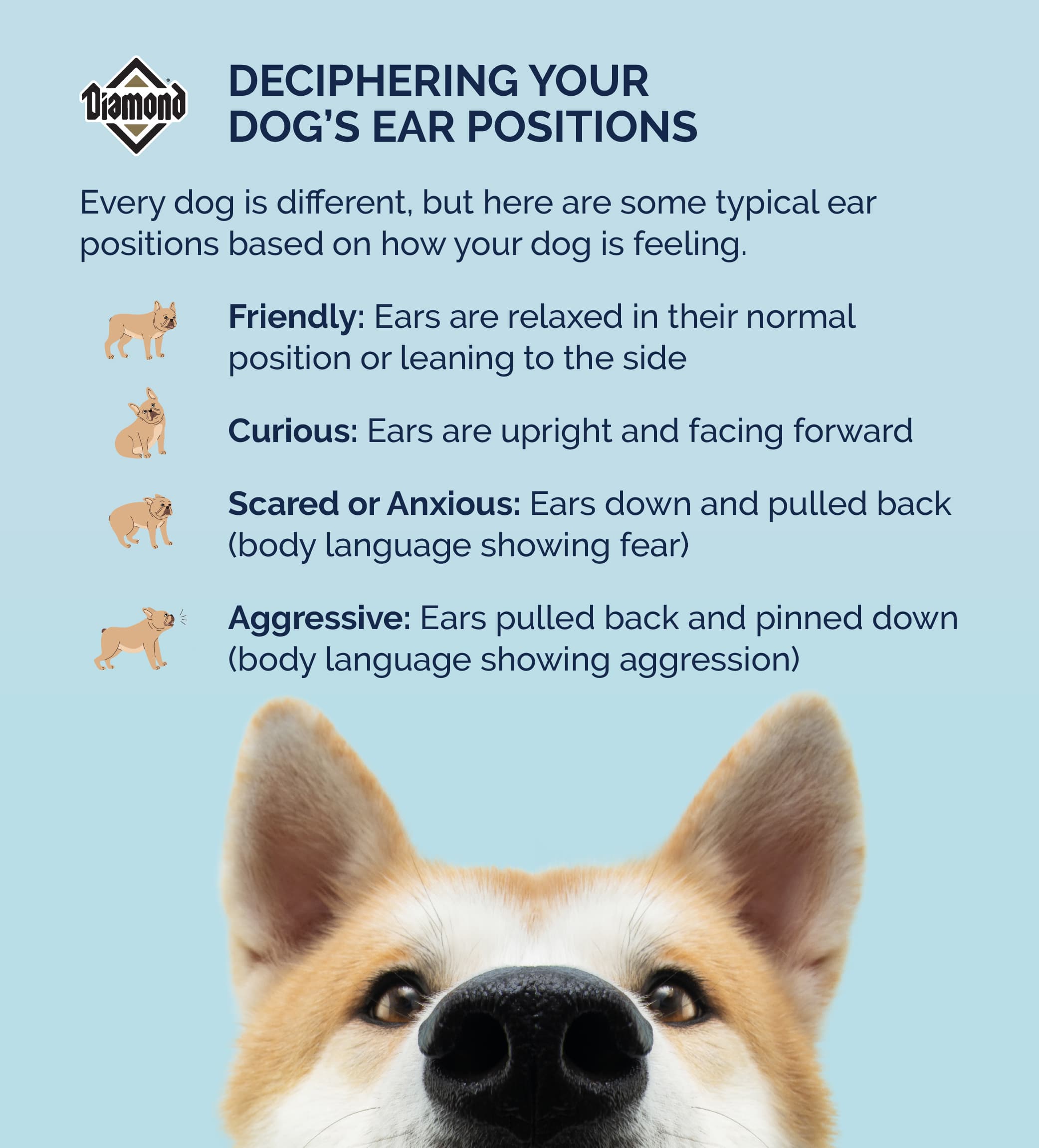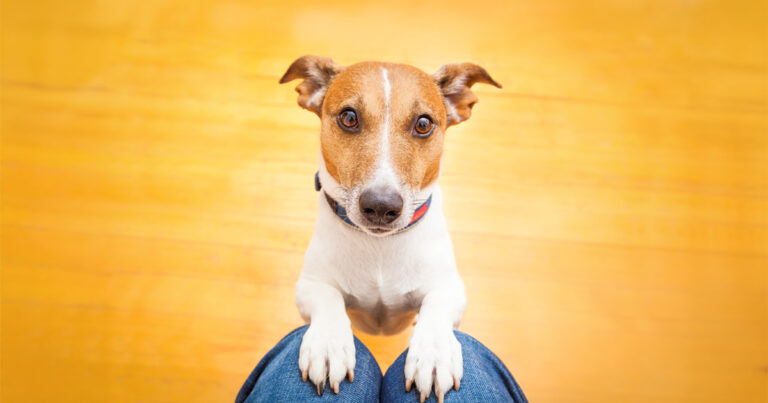As much as you would love to, people can’t have a two-way conversation with their dogs (not yet anyway). Sometimes it would be useful to know how your dog is feeling, and while you can’t ask them, you can try interpreting some of their body language. Dogs use body language to communicate with each other (among other things) and you can use it to help understand your dog’s mood, too.
Two of the body parts that are useful for interpreting what your dog might be thinking are their ears. The position and direction of their ears can give you insight into whether they’re scared, relaxed or curious about something. But like all body language signs, their ears shouldn’t be interpreted by themselves; you need to look at all of your dog’s body language to really understand what’s going on.
Some Pointers on Dog Ear Positions
Canine ears come in all different shapes and sizes — prick, bat, drop, button and rose, to name a few. And all those shapes and sizes can make it a little difficult to see exactly how your dog’s ears are positioned. Below we’ve listed some of the general positions dogs’ ears might be in, depending on how they’re feeling; but keep in mind that your dog’s ear positions may look a little different. To help you assess the whole situation, we’ve also included some of the body language signs typically associated with each feeling.
Relaxed and Happy
Life is goooood. If your dog is feeling friendly and calm, they will likely have their ears in their normal position or leaning to the side a little, and the ears will be relaxed (floppy). Sometimes they may also have their ears down and back, but they won’t be pinned flat against their head — they’ll be floppy.
If they’re feeling playful or excited, they may have high and perky ears. Upright ears can also be an early warning sign of aggression, but if they are feeling playful, the rest of their body language will be relaxed, not tense.
Body language signs of a friendly and relaxed dog include:
- Big wide eyes
- An open mouth that isn’t showing teeth (they’re “smiling”)
- Tail is down and relaxed
- A soft face
- A loose and relaxed stance
Listening and Observing
Curiouser and curiouser. If your dog hears or sees something interesting, their ears may be upright (perky) and facing forward. In some cases they may be on alert and listening to decide if they should be worried about something: the distant sound of thunder, a bark from the dog next door. Other times it may be because they thought they heard the rustle of the treat bag. You may notice their ears move a little while they’re listening as they fine tune where the sound came from.
Body language signs of a dog who is on alert or listening include:
- A high tail
- Open mouth but not showing teeth
- Wide alert eyes
- Looking intently but not at anything in particular (because they’re listening)
Scared or Anxious
What was that? If your dog is worried or scared they will probably have their ears down and pulled back, possibly flattened. Their body language will also be telling you that something is definitely wrong.
Body language signs that your dog is showing fear or concern include:
- Tail tucked between their legs and not moving or moving just a little
- Lowered body with their hind end up and head closer to the floor
- Dilated pupils
- Panting
- They may submit completely by rolling over to show their belly
Aggressive
Back off! If your dog is feeling threatened and is displaying aggression they will likely have their ears down and pinned flat against their head. Ears down and flat can mean scared or aggressive, but you can tell if they are moving from afraid to defensive (aggressive) if their body language changes. As mentioned earlier, raised or pricked ears positioned forward can be an early warning sign of aggression (they’re on alert).
Body language signs of an aggressive dog include:
- Standing at full height and leaning forward
- Growling or snarling
- Hackles raised
- Challenging stare
- Bared teeth

Your dog’s ear position, facial expressions, sounds, other body language and the situation should all be considered together when you’re interpreting how they are feeling. Of course, you probably won’t know for sure what they’re thinking, and every dog is different. You know your dog best: so by studying your dog’s body language, you can decide how they might be feeling about the situation.
RELATED POST: The Best Bet to Pet Your Pet







